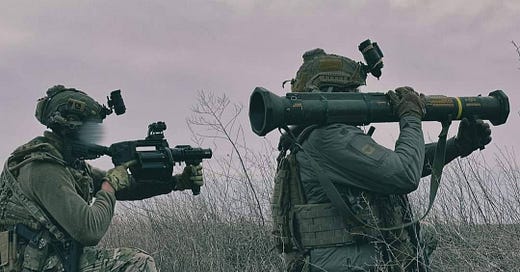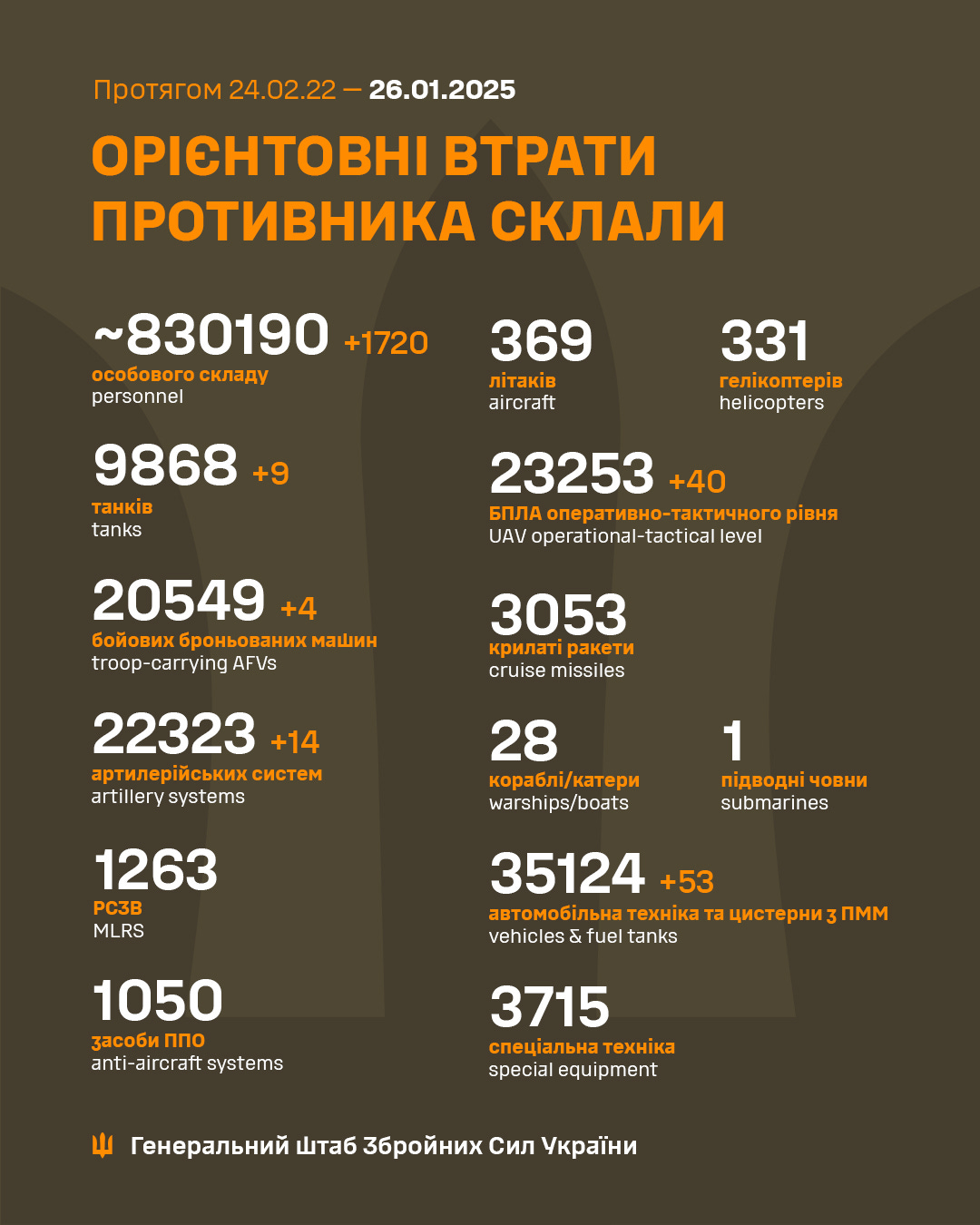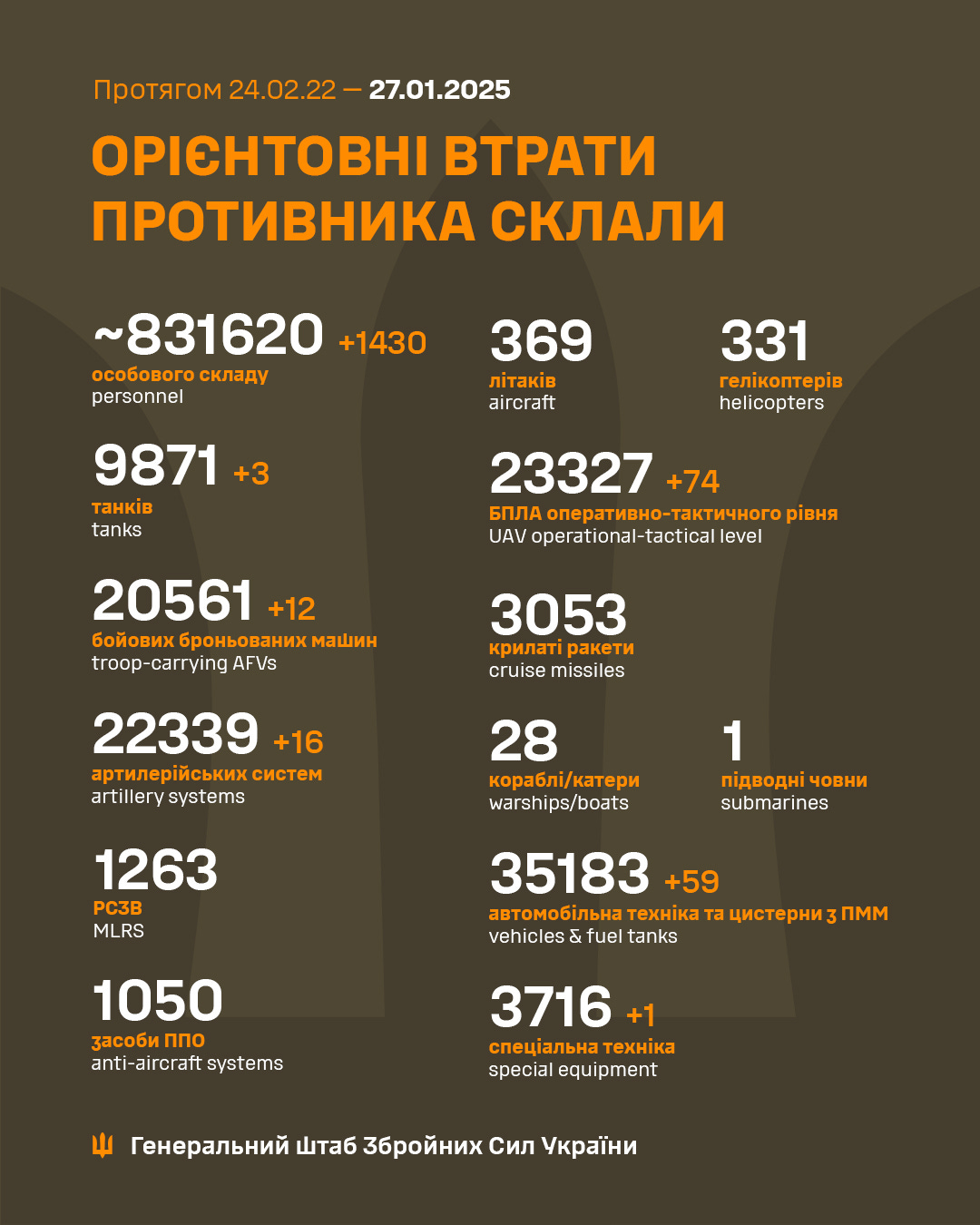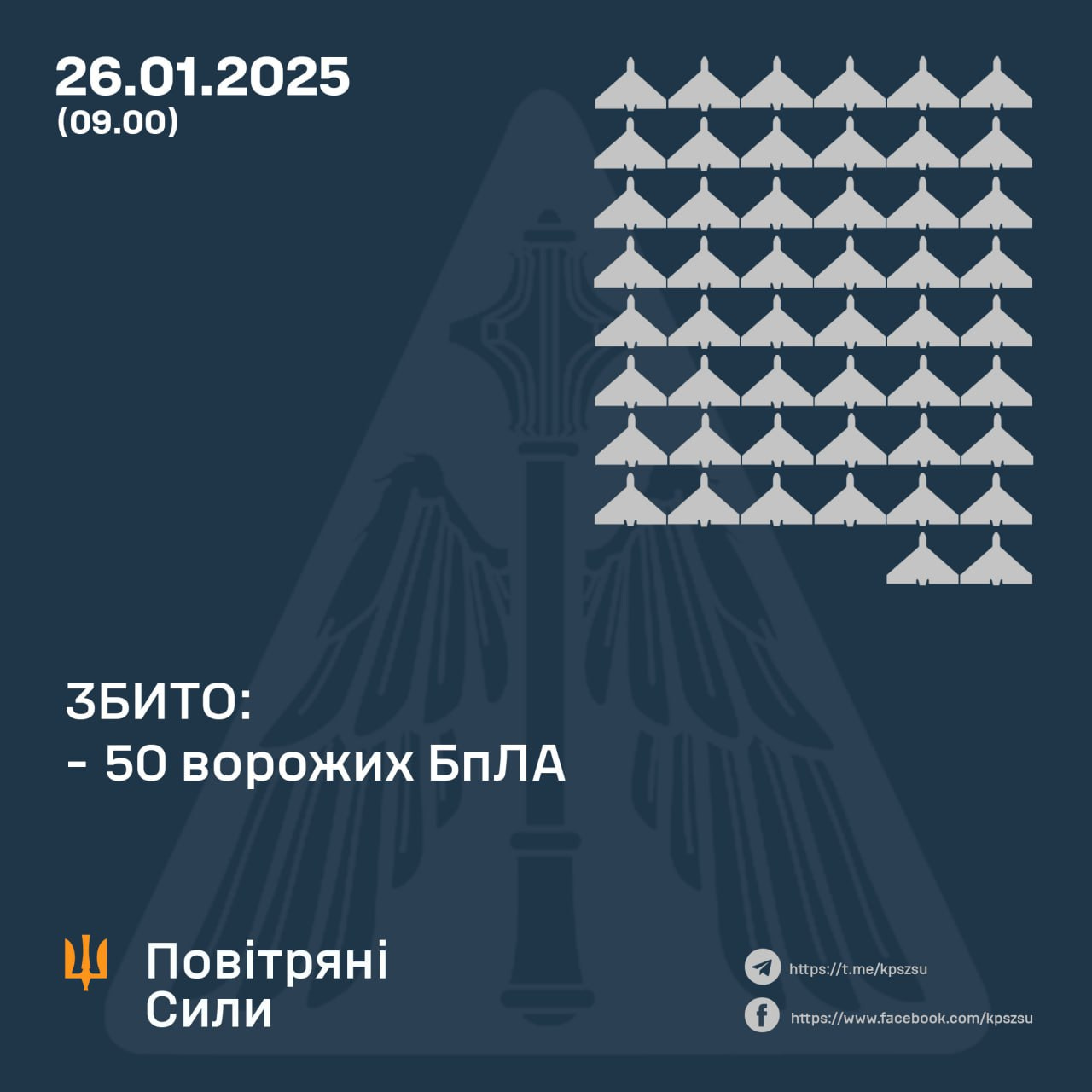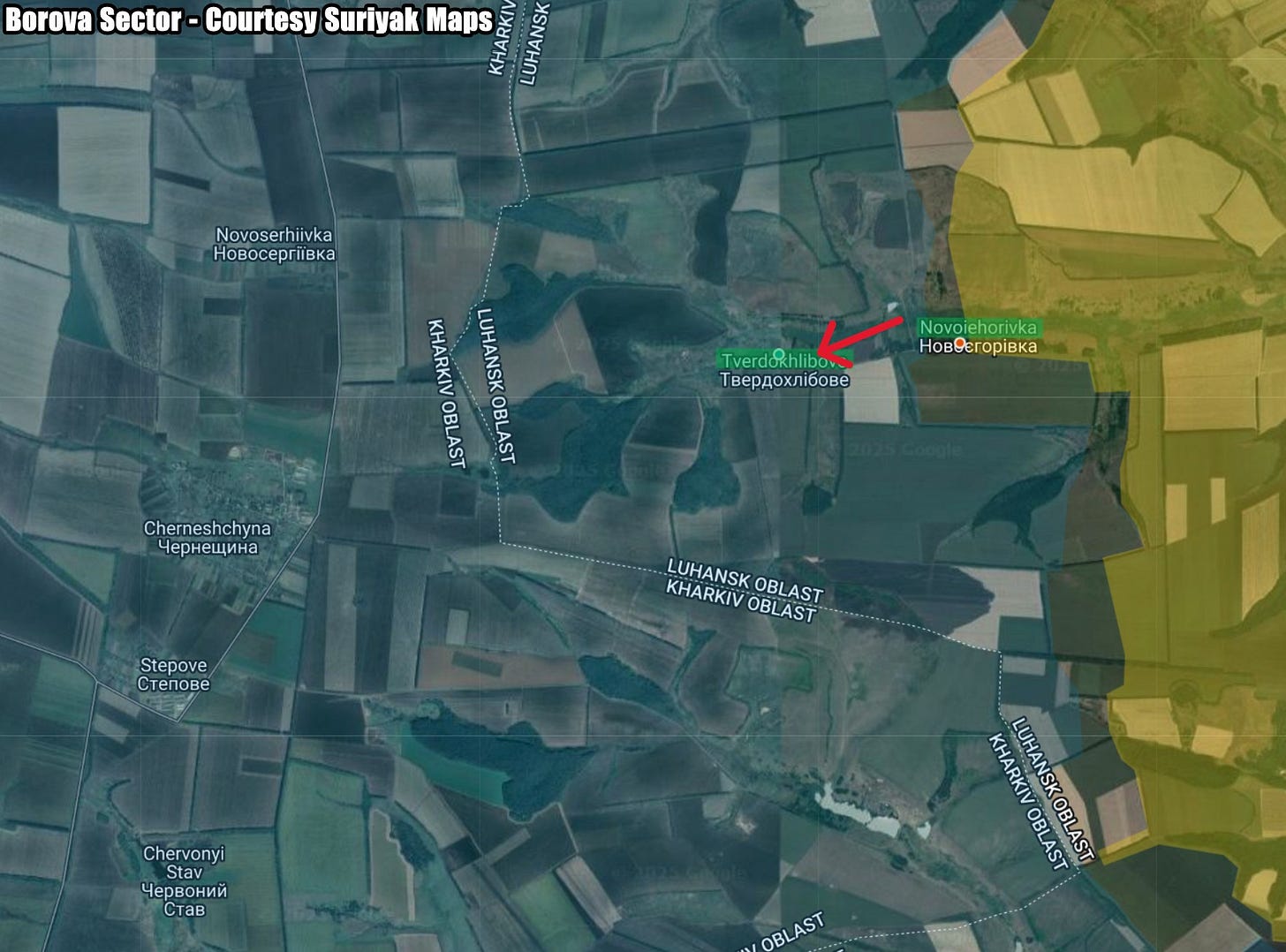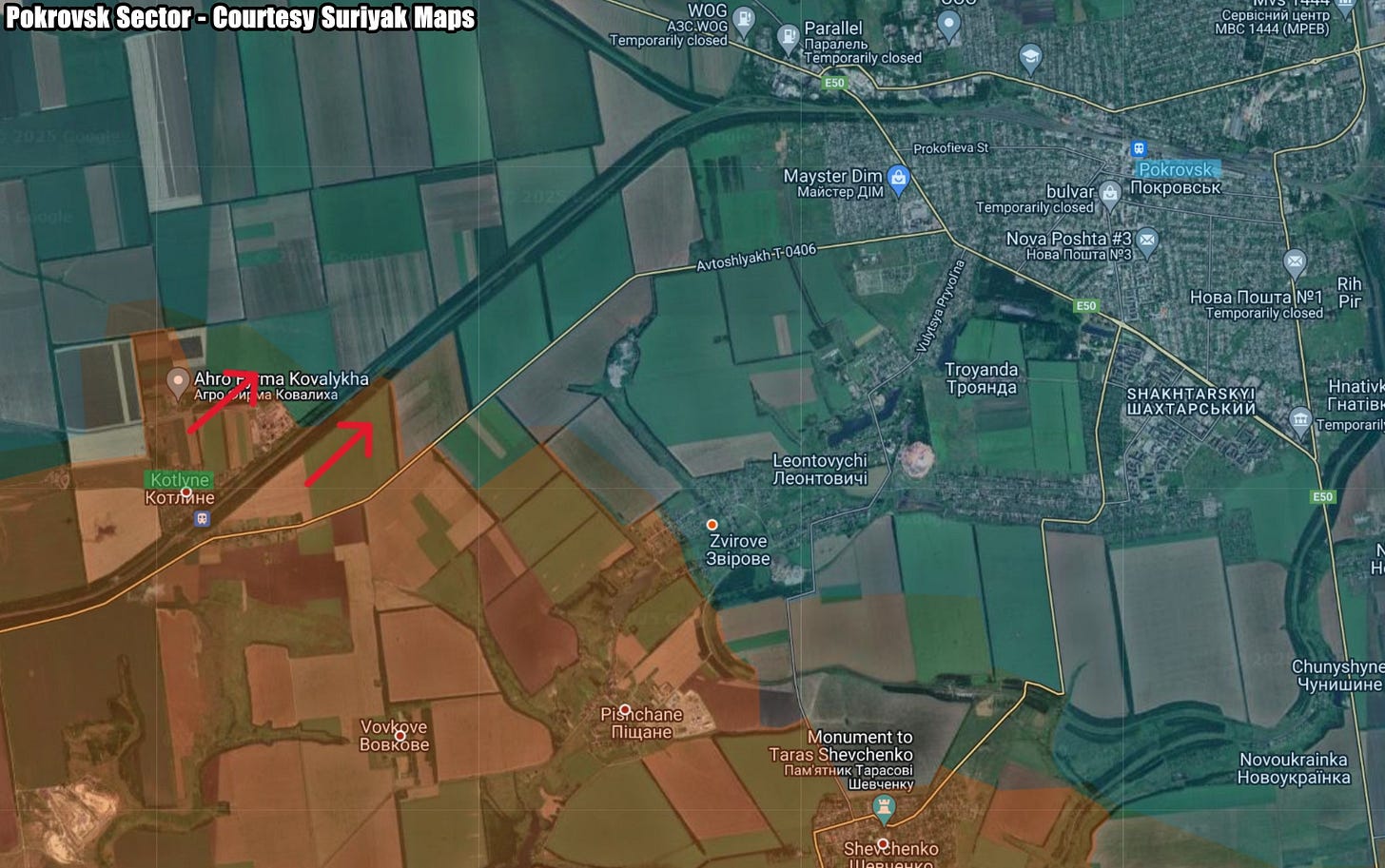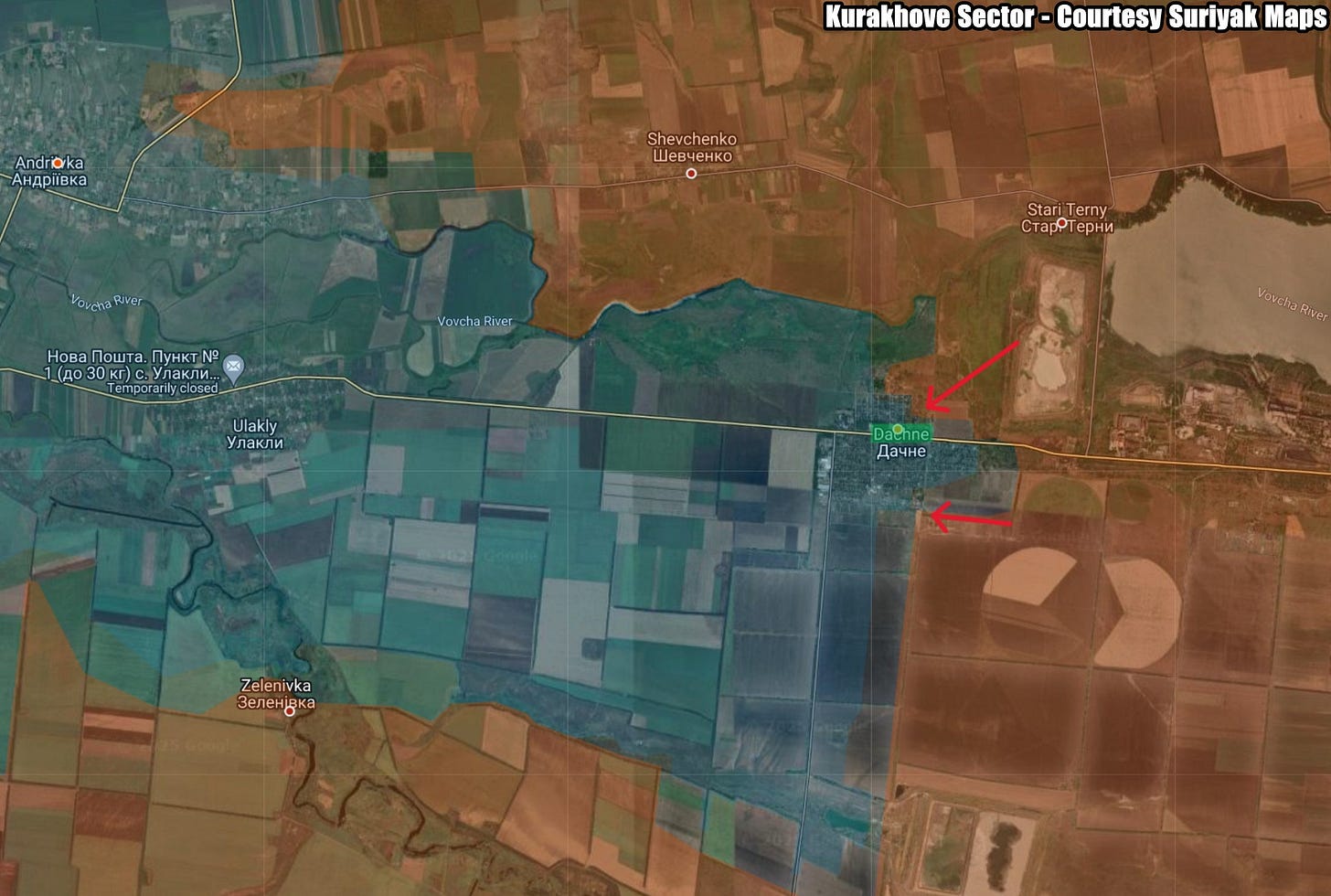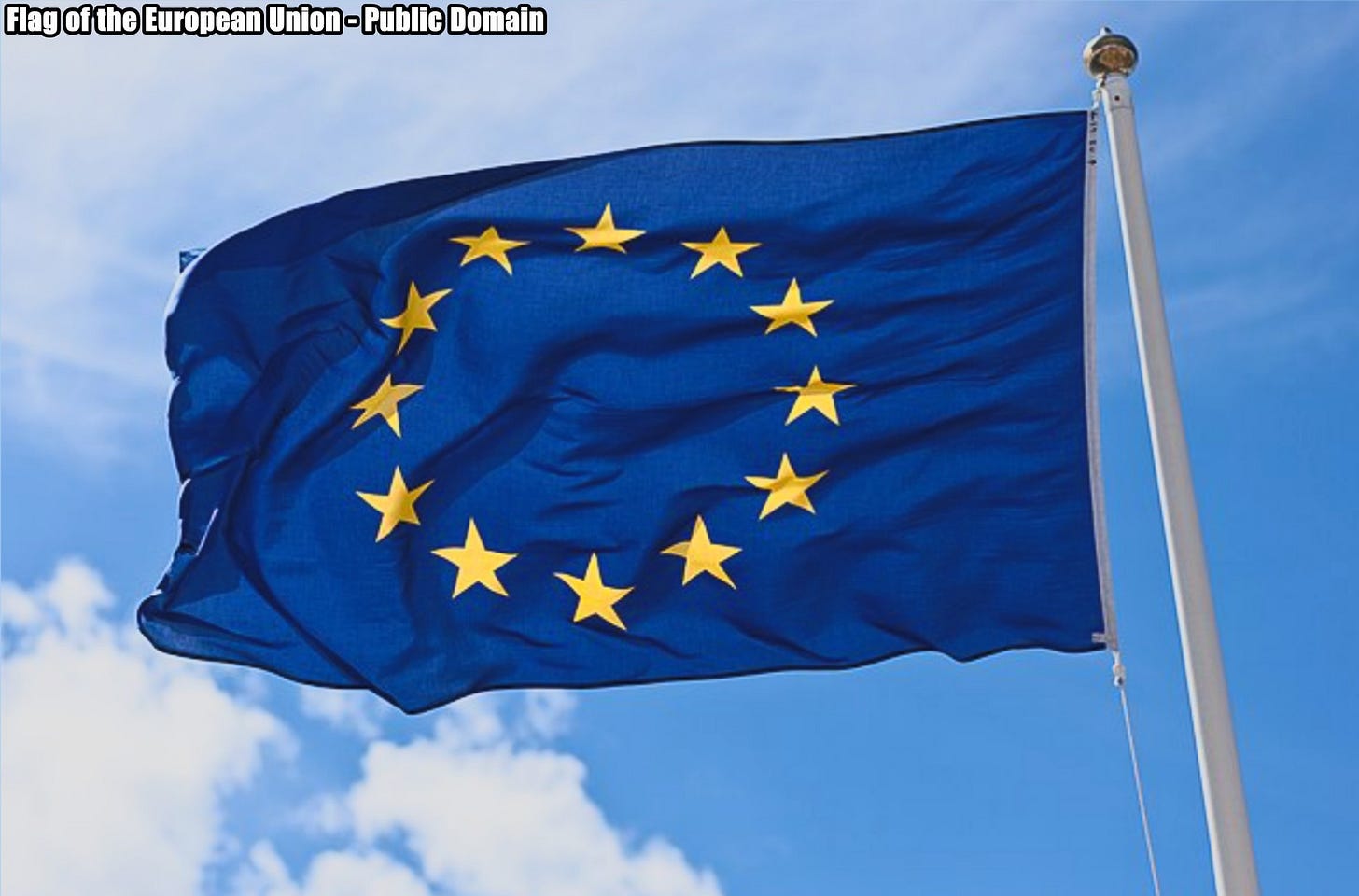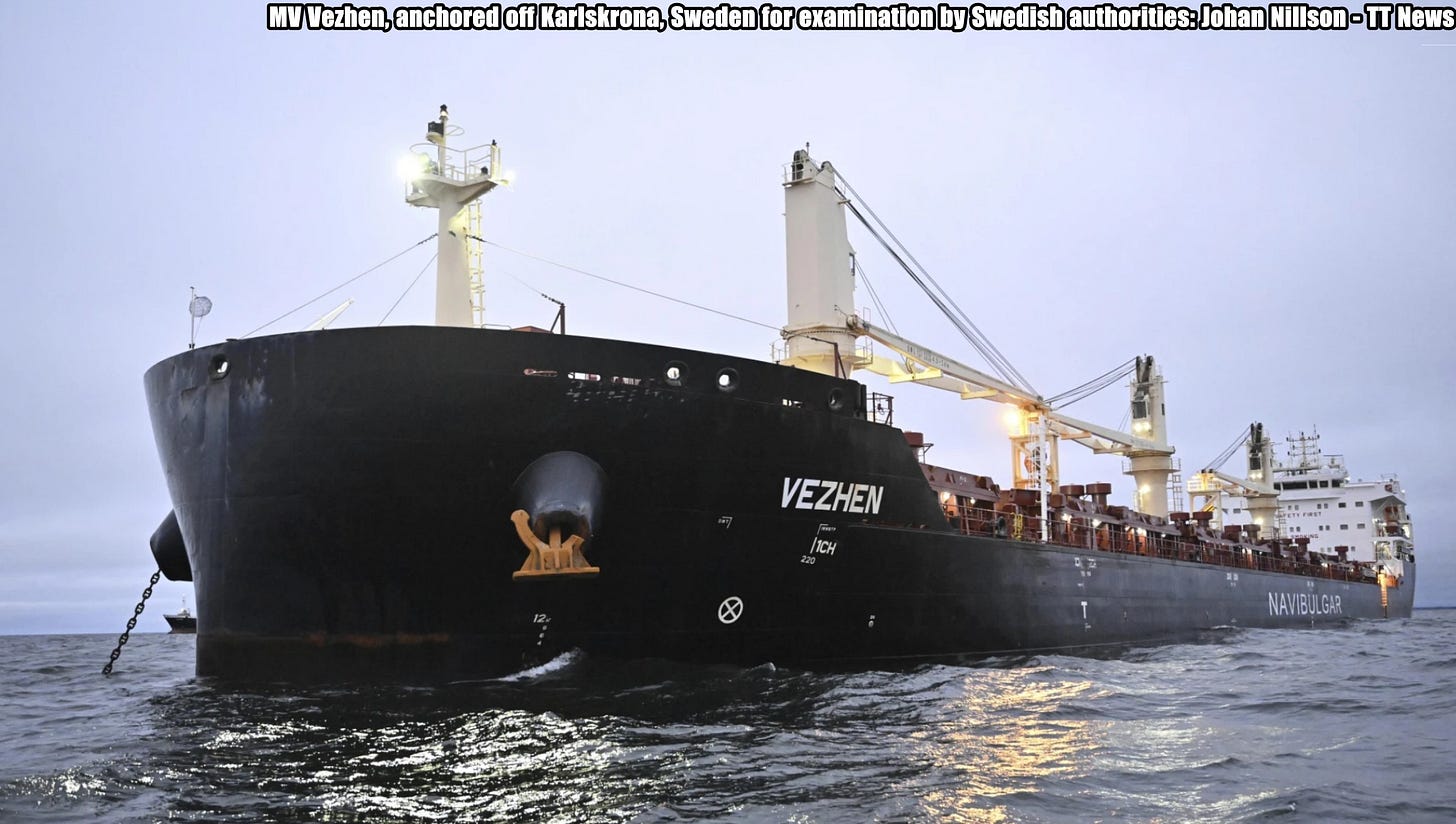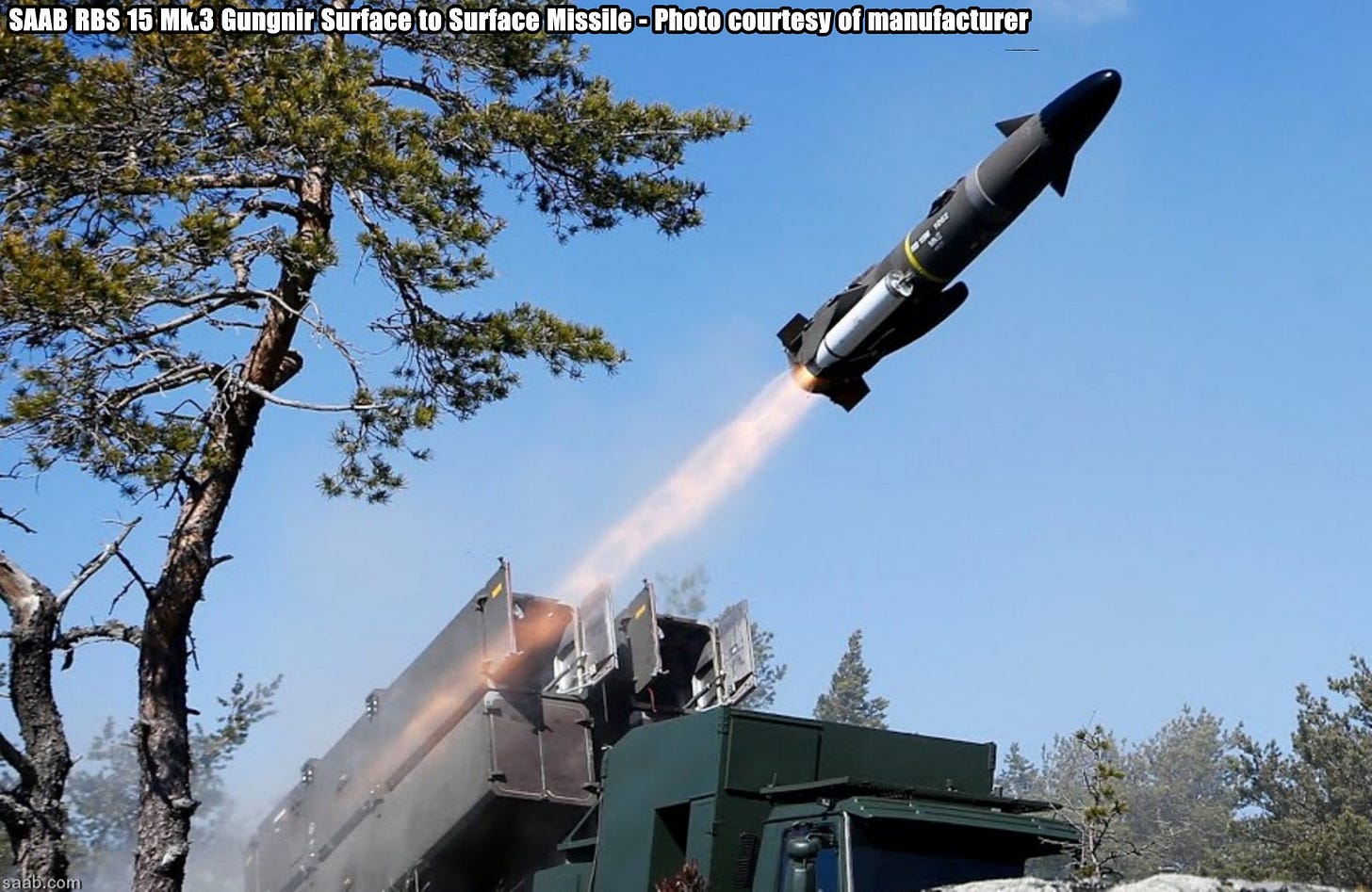Slava Ukraini! In early 2022 I began a Telegram channel aggregating news from a number of sources daily on the war in Ukraine. In June 2023 I began providing a daily draft for the Ukraine War Brief Podcast collecting news from over 70 sources daily, which formed the basis of the script. While the Podcast no longer exists I have continued to make this Brief available for my followers here on Substack for those who wish to keep up with the news from the war.
All the latest news on the Russo-Ukraine War 6 days per week
ALONG THE CONTACT LINE
GSAFU Morning Report
The General Staff of the Armed Forces of Ukraine in its Operational Information update at 08:00 on Jan 27 stated that day 1069 of the full-scale invasion of the Russian Federation against Ukraine had begun.
The situation on the line of combat remains tense in some sectors. Ukrainian defenders continue to actively counteract the Russian aggressor, causing them losses in personnel equipment and technology. Exhausting the enemy along the entire front line and continuing to disrupt the plans of Russian occupiers to advance deeper into the territory of Ukraine.
During the past two days, 333 combat engagements took place.
Over the past 48 hours, the enemy carried out missile strikes, 110 air strikes, used 4,124 drones and fired approximately 10,000 artillery shells across the positions of Ukrainian forces and civilians.
-
Air Force Daily Report
50 ENEMY UAVS SHOT DOWN, 9 DRONES FAILED TO REACH THEIR TARGETS (LOCATIONALLY LOST)
➖➖➖➖➖➖➖➖➖
On the night of Jan 26, 2025 (from 7:00 p.m. on Jan 25), the enemy attacked with 72 Shahed attack UAVs and simulator drones of various types from the directions: Orel, Kursk, Bryansk, Millerovo, Primorsko-Akhtarsk - Russia.
The air attack was repelled by anti-aircraft missile troops, electronic warfare units, and mobile fire groups of the Air Force and Defense Forces of Ukraine.
As of 09:00, it was confirmed that 50 Shahed attack UAVs and other types of drones were shot down in Kyiv, Odessa, Kharkiv, Poltava, Sumy, Donetsk, Dnipropetrovsk, and Khmelnytskyi regions.
9 enemy drones-simulators — lost in location (without negative consequences). One UAV — in the air, combat operation continues!
57 ENEMY UAVS SHOT DOWN, 39 DRONES FAILED TO REACH THEIR TARGETS (LOCATIONALLY LOST)
➖➖➖➖➖➖➖➖➖
On the night of Jan 27, 2025 (from 8:00 p.m. on Jan 26), the enemy attacked with 104 Shahed attack UAVs and simulator drones of various types from the following directions: Orel, Kursk, Millerovo, Primorsko-Akhtarsk - Russia, Chauda - Crimea.
The air attack was repelled by aviation, anti-aircraft missile troops, electronic warfare units, and mobile fire groups of the Air Force and Defense Forces of Ukraine.
As of 09:00, it has been confirmed that 57 Shahed attack UAVs and drones of other types have been shot down in Kyiv, Mykolaiv, Kharkiv, Poltava, Sumy, Dnipropetrovsk, Khmelnytskyi, Zhytomyr, Vinnytsia and Ivano-Frankivsk regions.
39 enemy drones-simulators - lost in location (without negative consequences).
The Russian UAV attack affected Dnipropetrovsk, Sumy, Ivano-Frankivsk and Kyiv regions. Infrastructure facilities, apartment buildings and private houses were hit. No casualties have been reported so far, and assistance is being provided to the victims. Special services are eliminating the consequences of the enemy attack.
Combat Operations in the Russian Federation
Ukrainian forces recently marginally advanced in Kursk Oblast amid continued fighting in the Ukrainian salient on Jan 26. Geolocated footage published on Jan 26 indicates that Ukrainian forces recently marginally advanced in central Pogrebki (north of Sudzha) and in the forested area northwest of Kositsa (northeast of Sudzha). Russian milbloggers claimed that Ukrainian forces conducted counterattacks near Pogrebki.
Russian sources claimed on January 26 that Ukrainian forces unsuccessfully attempted to cross the Russian-Ukrainian international border towards Tetkino (west of the main Ukrainian salient in Kursk Oblast), and some milbloggers characterized the Ukrainian activity as a reconnaissance-in-force mission.
The Khortytsia operational-strategic group
(Responsible for the northeastern part of Ukraine. )
Borova Sector: Russian forces recently advanced in the Borova direction amid continued Russian offensive operations in the area on Jan 26. Geolocated footage published on Jan 26 shows Russian soldiers raising a Russian flag in eastern Tverdokhlibove (southeast of Borova), indicating that Russian forces recently advanced to the eastern part of the settlement and seized Novoyehorivka (just east of Tverdokhlibove)
Toretsk Sector: Ukrainian forces recently regained limited positions in Toretsk amid ongoing Russian assaults in the settlement on Jan 26. Geolocated footage published on Jan 26 indicates that Ukrainian forces recently regained limited positions in northwestern Toretsk. A Ukrainian battalion commander operating in the Toretsk direction reported that Ukrainian forces maintain positions within the administrative boundaries of Toretsk.
The Tavria operational-strategic group
(Responsible for the central-eastern and southeastern part of Ukraine.)
Pokrovsk Sector : Russian forces recently marginally advanced west of Pokrovsk amid ongoing offensive operations in the Pokrovsk direction on Jan 26. Geolocated footage published on Jan 25 indicates that Russian forces recently marginally advanced in the fields north of Kotlyne (west of Pokrovsk). The spokesperson of a Ukrainian National Guard Brigade operating in the Pokrovsk direction stated that Russian forces are transporting infantry on armored vehicles towards Ukrainian positions and are using several tanks to provide fire support for each group of disembarking infantry.
Kurakhove Sector: Russian forces recently advanced in the Kurakhove direction amid continued offensive operations in the area on Jan 26. Geolocated footage published on January 26 indicates that Russian forces recently advanced to the eastern outskirts of Dachne (west of Kurakhove).
Velyka Novosilka Sector: Russian forces recently made further advances within Velyka Novosilka amid official Russian claims that Russian forces seized the entire settlement on Jan 26. Geolocated footage published on Jan 26 indicates that Russian forces advanced northward along Tsentralana Street in northern Velyka Novosilka. Some Russian sources, including the Russian Ministry of Defense (MoD), claimed on Jan 26 that Russian forces completely seized Velyka Novosilka, whereas other Russian sources claimed that Russian forces had seized most of the settlement. Some Russian milbloggers claimed that Russian forces are still clearing Ukrainian forces from the settlement, including the northern part, and that Ukrainian forces are still counterattacking in the area.
ISW has observed geolocated evidence to assess that Russian forces occupy 89 percent of the settlement, however. Khortytsia Group of Forces Spokesperson Major Viktor Trehubov stated on Jan 26 that Russian forces have not occupied all of Velyka Novosilka and that Ukrainian forces maintain positions in the settlement.
A Ukrainian brigade operating within Velyka Novosilka stated on Jan 26 that fighting continues within the settlement and that Russian forces do not pose a threat of encircling the brigade's elements. ISW has not observed independent evidence of Russian forces encircling Ukrainian forces in Velyka Novosilka. The Ukrainian brigade also reported that neither Russian nor Ukrainian forces can use heavy equipment due to parity of strikes near the contact line and that Ukrainian and Russian forces have "approximate parity" in terms of artillery and first-person view (FPV) drones but that Russian forces have a "huge" manpower advantage in the area. The brigade stated that Ukrainian forces are conducting artillery and drone strikes against Russian forces within Velyka Novosilka and that the Mokri Yaly River that flows through western Velyka Novosilka is an obstacle to Russian advances. Russian forces continued offensive operations within and near Velyka Novosilka itself, northeast of Velyka Novosilka near Rozdolne, and west of Velyka Novosilka near Novosilka on Jan 25 and 26
The Odesa operational-strategic group
(Responsible for Kherson, Qırım, (also known as Crimea) and the Black Sea.)
There have been no major changes to the combat environment since our last report.
TEMPORARILY OCCUPIED TERRITORIES
Nothing major to report.
THE HOME FRONT
Russian attacks against Ukraine kill 4, injure 7 over past day
Russian attacks against Ukraine killed four civilians and injured seven over the past day, regional authorities reported on Jan. 27 the Kyiv Independent reports.
Overnight on Jan. 27, the Russian military attacked Ukraine with 104 Shahed-type drones and decoy drones, Ukraine’s Air Force reported on their Telegram channel. Air defenses shot down 57 drones over 10 oblasts, while 39 decoy drones were lost in the airspace, the Air Force said.
One person was killed, and two others were injured as a result of the Russian military’s attacks on the city of Kherson and 28 other regional settlements, Kherson Oblast Governor Oleksandr Prokudin reported on his Telegram channel.
One person was killed and four were injured in Donetsk Oblast as a result of Russia’s attacks, Governor Vadym Filashkin reported.
Due to Russian attacks on the city of Kupiansk, an 86-year-old woman and was injured in Kharkiv Oblast, Governor Oleh Syniehubov reported. Two other women were killed, the State Emergency Service said after concluding rescue operations.
Russian drones also targeted a critical infrastructure facility in western Ivano-Frankivsk Oblast, Governor Svitlana Onyshchuk reported. The strike started a fire but inflicted no casualties, she said.
Nikopol shelled - fire erupts and 5 hospitalized
Russian forces launched an artillery strike on Nikopol in Dnipropetrovsk Oblast on Monday, Jan. 27, injuring five people, New Voice reports citing regional governor Serhiy Lysak.
"The occupiers have been shelling Nikopol since the morning," Lysak said, adding that the attack caused a fire and damaged an industrial facility. The injured men, aged 30 to 39, have been hospitalized, he noted.
Earlier on Jan. 27, Lysak reported that Russian forces had attacked Nikopol district with Grad multiple-launch rocket systems and heavy artillery. Additionally, the region came under drone strikes, with Ukrainian air defenses shooting down 13 UAVs overnight.
In the city of Dnipro, three residential buildings were damaged, and a fire broke out in one of them.
The attacks caused damage to critical infrastructure in Ivano-Frankivsk Oblast and the city of Sumy.
RUSSIAN WORLD
Russia's Ryazan oil refinery in flames again after Ukrainian drone strike.
A fire erupted at Russia's Ryazan Oil Refinery after a drone strike overnight on Jan. 26, the Kyiv Independent reports citing Russian media reports.
The reported strike comes two nights after the Security Service of Ukraine (SBU) and Ukraine's Special Operations Forces (SOS) launched a joint attack against the Ryazan Oil Refinery on Jan. 24.
Locals reported sounds of explosions and an attempted drone attack on the refinery shortly before 1 a.m. on Jan. 26, the Russian Telegram news channel Astra said. Ryazan Oblast Governor Pavlo Malkov confirmed that Russian air defense units were repelling a drone attack in the region.
Andrii Kovalenko, the counter-disinformation chief at Ukraine's National Security and Defense Council, posted video to his official Telegram channel purporting to show a fire at the refinery after it was hit by drones.
Astra confirmed that video footage of the fires circulating online was filmed at the site of the refinery, but said that because of the timing of the strike it was difficult to determine whether the fire was from a new hit or the Jan. 24 attack.
The Ryazan Oil Refinery, one of Russia's largest, has the capacity to process 17 million metric tons of oil per year. Profits from fossil fuels fund Russia's war machine and Ukraine considers oil industry facilities to be valid military targets.
Lukashenko Extends 30-Year Rule in new ‘Election’
Belarusian President Alexander Lukashenko won a seventh consecutive term in office Sunday in an election denounced by the European Union and the country's exiled opposition. The Moscow Times reports.
With all his opponents in prison or living in exile abroad, the 70-year-old ruler appeared to have won 87.6% of the vote, according to an official exit poll. That is more than the 81.04% Lukashenko was purported to have wone in the country's last presidential election.
Exiled opposition leader Svetlana Tikhanovskaya called the election a "farce," while the EU described it as a "sham." Lukashenko, however, said he did not care whether or not the bloc recognized the results.
The Belarusian leader also said that he had "no regrets" about allowing Russian President Vladimir Putin, who he described as his "older brother," to use Belarus as a staging ground for the full-scale invasion of Ukraine.
Sunday's vote took place five years into a wave of heightened repression in Belarus, during which rights groups say the country has jailed more than 1,200 people as political prisoners.
Belarus's 2020 election ended in nationwide protests, with demonstrators accusing Lukashenko of rigging the vote. Tens of thousands of Belarusians fled their country in the aftermath of the 2020 protests as the country's security services embarked on a repression spree, mainly to neighboring Poland and Lithuania.
Lukashenko said Sunday that his opponents were behind bars or abroad out of choice. "Some chose prison, some exile," he said. "If it is prison then it's those who opened their mouths too widely," he added.
Repenting and asking for pardon were preconditions for any prisoner releases, Lukashenko said during a news conference that lasted four hours and 25 minutes.
In Warsaw, home to many exiled Belarusians, opposition leader Tikhanovskaya described Lukashenko as a "criminal who has seized power."
Many people wore masks and some refused to speak to AFP, explaining they had relatives in Belarus and criticism could cause trouble for them.
"It's just a country with the illusion of choice," said Aliaxandra, a 22-year-old student, adding that some of her fellow citizens had been living in fear "for decades."
Tikhanovskaya told AFP in an interview earlier this month she wanted dissidents to be ready for an opportunity for change in Belarus. But she admitted that it was "not the moment."
In a statement on Sunday, the foreign ministers of the eight Nordic and Baltic nations — Estonia, Latvia, Lithuania, Denmark, Finland, Iceland, Norway and Sweden — celebrated "the tireless efforts of the Belarusian democratic forces led by Svetlana Tikhanovskaya."
Most people in Belarus have only distant memories of life before Lukashenko, who was 39 when he won the first national election after the country gained independence from the Soviet Union.
Public criticism of Lukashenko is banned. Most people AFP spoke to in Minsk and other towns voiced support for him.
In Minsk, 74-year-old pensioner Nadezhda Guzhalovskaya said she voted for Lukashenko due to a lack of other options.
"Maybe everything here is not perfect, we don't have democracy," Guzhalovskaya said.
INTERNATIONAL NEWS
Zelenskyy offers Ukraine as transit hub for Azerbaijani gas to Europe
President Volodymyr Zelenskyy announced on Jan. 25 that Ukraine is ready to facilitate the transit of gas from Azerbaijan to Europe. Zelensky explained that he discussed this potential arrangement with Azerbaijan's President Ilham Aliyev during their recent meeting, the Kyiv Independent reports.
The president emphasized that Azerbaijan has significant export capacity, with the ability to send up to 25 billion cubic meters of gas, and that Ukraine can provide the necessary infrastructure to transport it, though not Russian gas.
"There is gas, there are supply routes from Azerbaijan. The key is having the political will to work for your people, not with Moscow for some shadowy benefit, as some figures in Eastern Europe do,” Zelenskyy said.
Zelenskyy's remarks followed the suspension of Russian gas flows to Europe through Ukraine earlier this month, which caused dissatisfaction in Slovakia and Hungary, both of which had continued to receive substantial Russian gas deliveries.
Zelenskyy, speaking at a press conference with Moldovan President Maia Sandu, noted that Ukraine was focused on providing quick solutions to the energy crisis in Moldova's breakaway region of Transnistria, where Russia had also cut off gas supplies. He stressed that Ukraine would not allow Russia to profit from the situation but was willing to support Azerbaijan, Slovakia, and other European countries in this effort.
In December, Zelenskyy firmly rejected any renewal of the gas transit deal with Russia, saying: "We’re not going to extend the transit of Russian gas. We won't allow them to earn additional billions on our blood." His stance further complicated relations with Hungary, which has been a vocal supporter of Russia and has expressed concern over energy shortages.
The issue is expected to be a central topic when EU diplomats meet on Jan. 27 to discuss foreign policy.
Hungarian Prime Minister Viktor Orban has warned that he will veto the renewal of EU sanctions on Russia unless Ukraine agrees to reopen the gas pipeline and allow Central European countries, including Hungary, to import Russian gas.
Israel reportedly sends weapons captured in Lebanon to Ukraine
Israel is considering sending Soviet and Russian-made weapons captured in Lebanon to Ukraine, with signs transfers may be under way, the Telegraph reports.
Israel reportedly met with Ukrainian diplomats on Tuesday to discuss a weapons transfer. Since then, US military cargo planes have been tracked flying from Israel to an airbase in eastern Poland.
“There are signs that Israel has begun supplying Ukraine with Soviet and Russian-made weapons,” Two Majors, a pro-Russia military blog on the Telegram social messaging site, told its 1.2 million subscribers on Sunday.
It posted photos of dozens of shoulder-mounted missiles laid out on hard-baked ground, as well as two screengrabs of a US military plane flying from Ramstein airbase in Germany to Hatzerim airbase in Israel and then to Rzeszów in Poland, near the border with Ukraine.
Around 60 per cent of the weapons captured by Israel during their fight with Hezbollah in Lebanon in 2024 were made by the Soviet Union and Russia, according to reports.
These include sniper rifles and modern Kornet anti-tank missiles given to Hezbollah by Syria, which had been a staunch ally of Russia under Bashar al-Assad’s regime.
It comes after the Ukrainian embassy thanked Sharren Haskel, Israel’s deputy foreign minister, for asking the Israeli parliament to approve sending the captured weapons to Ukraine.
“It is noted that this initiative would be an important step in recognising the common threats facing both countries. The Ukrainian side expressed hopes for a positive solution to this issue,” the Ukrainian embassy said.
The weapons transfer deal was a private proposal initiated by Ms Haskel, according to the Jerusalem Post.
Ukrainian president Zelenskyy also met with his Israeli counterpart Isaac Herzog this week “to discuss important issues related to the cooperation between Ukraine and Israel”.
Israel has historically adopted a neutral policy against Russia but has become more aligned with Ukraine due to deepening ties between Moscow and Iran.
Iran has become an important ally of Russia over the past three years, supplying the Kremlin with thousands of drones and missiles to fire at Ukraine.
Meanwhile, Iran has propped up terror groups such as Hamas and Hezbollah whose goal is the destruction of the state of Israel.
Last year, Iran fired hundreds of ballistic missiles at Israel on multiple occasions.
EU foreign ministers agree to extend sanctions against Russia.
European Union foreign ministers approved the extension of sanctions against Russia on Jan. 27, the Kyiv Independent reported citing the EU’s chief diplomat, Kaja Kallas, announced on X.
"Europe delivers: EU foreign ministers just agreed to extend again the sanctions on Russia. This will continue to deprive Moscow of revenues to finance its war. Russia needs to pay for the damage they are causing," Kallas wrote on X.
Hungary’s Prime Minister Viktor Orban has threatened to veto the extension until Ukraine resumes the transit of Russian gas through its territory. The announcement by Kallas comes after Hungarian Foreign Minister Peter Szijjarto said that Brussels had provided the "requested guarantees" on energy security.
"The European Commission is committed to protecting natural gas and oil pipelines leading to European Union member states," the Hungarian chief diplomat said, adding that the European Commission will also ask Kyiv to maintain the oil transit through its territory.
Ukraine terminated Russian natural gas transit through its territory on Jan. 1. Kyiv has repeatedly warned that it would not extend the agreement when it expires at the end of 2024 because it did not want to finance Russia's war.
The end of transit led to a spat between Kyiv on one side and Hungary and Slovakia on the other, with the two latter countries complaining the decision endangers their energy security.
Ukraine continues to transit Russian oil, though a bill on banning the transit has been registered in the parliament.
The EU has imposed 15 sanctions packages against Russia, which include restrictions on individuals and legal entities. The limitations also targeted Russia’s so-called "shadow fleet" of oil tankers and froze Russian assets, among other moves.
In January, the European Commission launched consultations on the 16th package of sanctions against Russia. The restrictions are expected to apply to imports of aluminum, agricultural products, the "shadow fleet," liquefied natural gas (LNG), and Russian banks.
Sweden seizes vessel suspected of ‘sabotage’ after undersea data cable rupture in Baltic Sea.
Swedish prosecutors announced Sunday night that they have opened a preliminary investigation into suspected aggravated “sabotage” and ordered the detention of a vessel in the Baltic Sea suspected of damaging an underwater fiber optic cable connecting Latvia and the Swedish island of Gotland earlier that day. AP reports.
“Several authorities, including the National Police Operations Department, the Coast Guard and the Armed Forces, are involved in the investigation,” said Mats Ljungqvist, senior prosecutor at the National Security Unit, according to a press release.
The Swedish Coast Guard confirmed to the newspaper Expressen that they were on site near the vessel which the paper identified as the Malta-flagged Vezhen, at anchor near the port of Karlskrona.
“We are directly on site with the seized ship and are taking measures as decided by the prosecutor,” said Mattias Lindholm, spokesperson for the Coast Guard.
According to data from Vesselfinder, the vessel departed from the Russian port of Ust-Luga several days earlier and was navigating between Gotland and Latvia at the time the damage was suspected of having occurred.
MILITARY & TECH
North Korea supplies 60% of Russia’s frontline ammunition
While suffering heavy casualties in human-wave attacks, North Korea maintains critical support to Russia’s war effort, providing 60% of frontline ammunition and deploying disguised rocket launchers. Euromaidan reported on Jan 26.
North Korea continues to provide Russia with equipment, ammunition, and personnel, said Lieutenant General Ihor Romanenko, former Deputy Chief of the General Staff of the Armed Forces of Ukraine.
Romanenko highlighted that North Korea’s support remains substantial, supplying 60% of the ammunition Russia uses on the front lines.
In exchange, Kim Jong Un receives technology, funding, and food supplies from Russia, sustaining their cooperation despite the associated risks and losses, Romanenko concluded.
In January, Ukrainian soldiers from the 95th Air Assault Brigade captured a North Korean soldier who refused to drop his sausage even at gunpoint and later attempted self-harm by striking his head against a concrete structure.
Earlier, reports emerged that North Korea deployed civilian trucks modified to conceal rocket launchers to Russia’s Kursk Oblast, where combined Russian-North Korean forces are engaged in combat with Ukrainian troops.
The 12-tube launchers, capable of firing 122-millimeter rockets with a 19-mile range, are disguised as ordinary box trucks. These vehicles were previously displayed during a 2023 military parade in Pyongyang alongside other civilian vehicles modified for military purposes.
North Korean troops withdrawn from the contact line in Kursk Oblast after severe losses.
North Korean troops appear to have temporarily pulled back from the frontline in Russia after suffering heavy losses, Sky News reported on Jan 27 citing a Ukrainian special forces commander.
The commander, who goes by the codename "Puls", said Kim Jong Un's men were likely either learning lessons from mistakes made during their first, bloody clashes with Ukrainian soldiers, tending to their wounded or waiting for reinforcements.
"I think they'll be back soon," he said, speaking at a secret base in northeastern Ukraine.
Interviews with several Ukrainian troops reveal remarkable details about how the North Koreans have been fighting since they arrived on the battlefield in the Russian region of Kursk last month. This includes:
• An apparent initial lack of awareness about the threats from drones and artillery, with North Korean soldiers attacking on foot "like something out of World War Two" in groups of 20, 40 or even 60 men, making themselves easy targets
• "Brainwashing" which means they keep pushing forward despite being under Ukrainian fire and with comrades being killed and wounded around them
• A desire to remove evidence of their presence from the warzone, with North Koreans in white helmets spotted trying to recover the wounded and the dead
Sweden Joins Hands With Ukraine to Develop a Deep Strike Missile
Defense officials of Ukraine and Sweden met last week to discuss the provisions of aid, equipment maintenance, and cooperation in joint development projects. Particularly notable is the announcement of an initiative to create a new long-range weapon. Defense Express reports.
The prospect of such cooperation sounds promising, as it could give Ukrainian Armed Forces a means of deep strikes into Russian territory without any imposed range restrictions and a battle-tested weapon to the Swedish military.
Sweden also has its domestically developed RBS 15 coastal defense missile system, a fairly powerful weapon, with an impressive range of 200 kilometers for the Mk 3, and 300 kilometers in the latest Mk4 version.
Cooperation with Sweden is a chance for both countries to exchange technologies and gain more experience in missile programs to ultimately field a product proven in real combat that may garner interest from potential export customers.
That’s it for today’s Brief folks if you would like to keep up with events in Ukraine daily please consider subscribing, it’s free!


